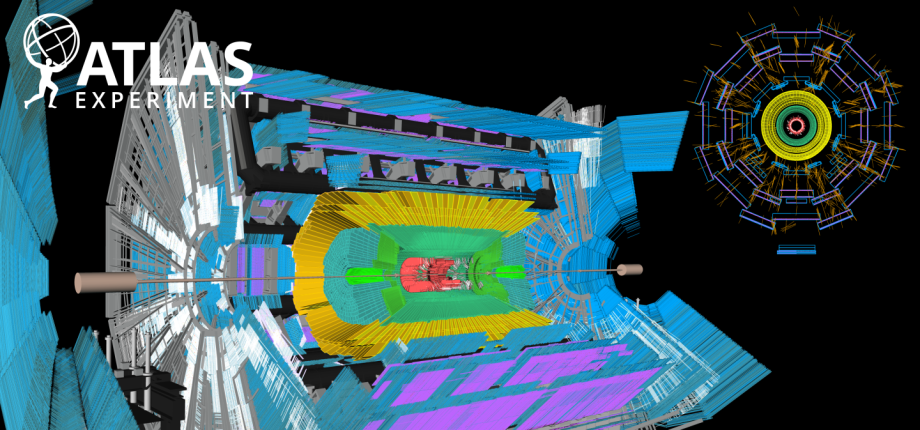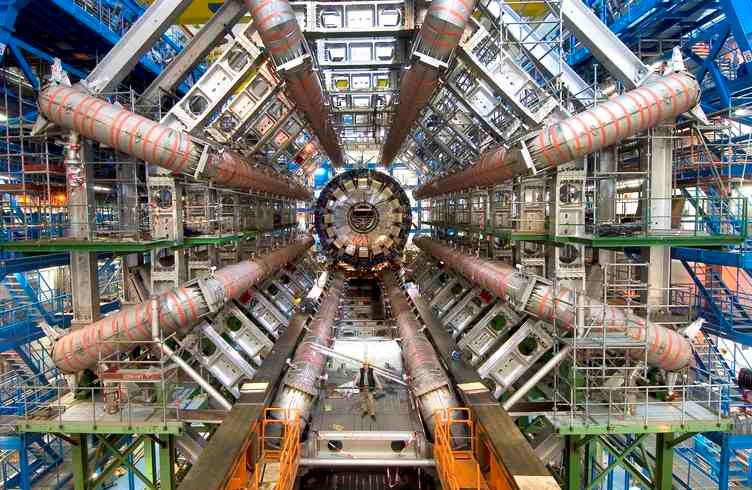ATLAS

The ATLAS detector is one of the 5 experiments installed around the Large Hadron Collider (LHC) at CERN for the detection of the HIGGS boson. ATLAS detector is made of 4 layers: an internal detector, an electromagnetic calorimeter, a hadronic calorimeter and a muon detector.
For the ATLAS experiment, the OMEGA laboratory has been involved from the beginning in the readout electronics of the Liquid Argon Calorimeter, in particular in the design of the Front End electronics that is made of very low noise preamplifiers and filters. Later, the laboratory has developed and produced the MAROC ASIC for the readout of the multi-anode photomultipliers used to measure the luminosity.
The laboratory is now involved in the development of new readout ASICs for the High Luminosity phase of the LHC (HL-LHC). OMEGA has the responsability of the new chips (CLAROC and LADOC) used for the calibration of the Liquid Argon Electromagnetic Calorimeter. OMEGA also coordinates the design of the ALTIROC chip to readout the new ATLAS timing detector named HGTD (High Granularity Timing Detector) .

HGTD: High Granularity Timing Detector
In the middle of the High Luminosity phase of ATLAS (around 2030), the number of simultaneous interactions per bunch crossing should reach 200 in average. Each collision produces new particles and measuring their trajectory allows determining where the collision took place.
However, with these new pile-up conditions, the tracking of particles becomes more and more difficult. Indeed, some collisions could have taken place at the same place but at different times. It is therefore necessary to know both the location and the precise time of the interaction in order to avoid mixing particles coming from different collisions in time.
This is why a new HGTD detector (High Granularity Timing Detector) based on a new technology of silicon detectors named "LGAD" (Low Gain Avalanche Diode) will be installed at each end of the ATLAS detector in order to know to which collision correspond the particles.
CALIBRATION OF ELECTROMAGNETIC CALORIMETER
OMEGA is in charge of the ASIC that generates very precise signals for the calibration of the Electromagnetic Calorimeter. Indeed, the accuracy of a calorimeter depends essentially on the reproducibility of its numerous readout channels. A calibration is regularly performed to correct for the dispersion of the readout channels. Such a calibration is done by generating a signal that is similar to the actual physics signal and identical for all the cells, whatever their position inside the detector. These calibration signals are created by two distinct ASICs. The first one, named LADOC, is designed in CMOS 130 nm technology and integrates a 16 bits current DAC as well as all the communication and configuration system (I2C link and decoding of the control signals provided by the acquisition system). The second ASIC, named CLAROC, is designed in XFAB SOI 180nm technology to provide the calibration signals on the required large dynamic range.
more informations:
https://home.cern/science/experiments/atlas


